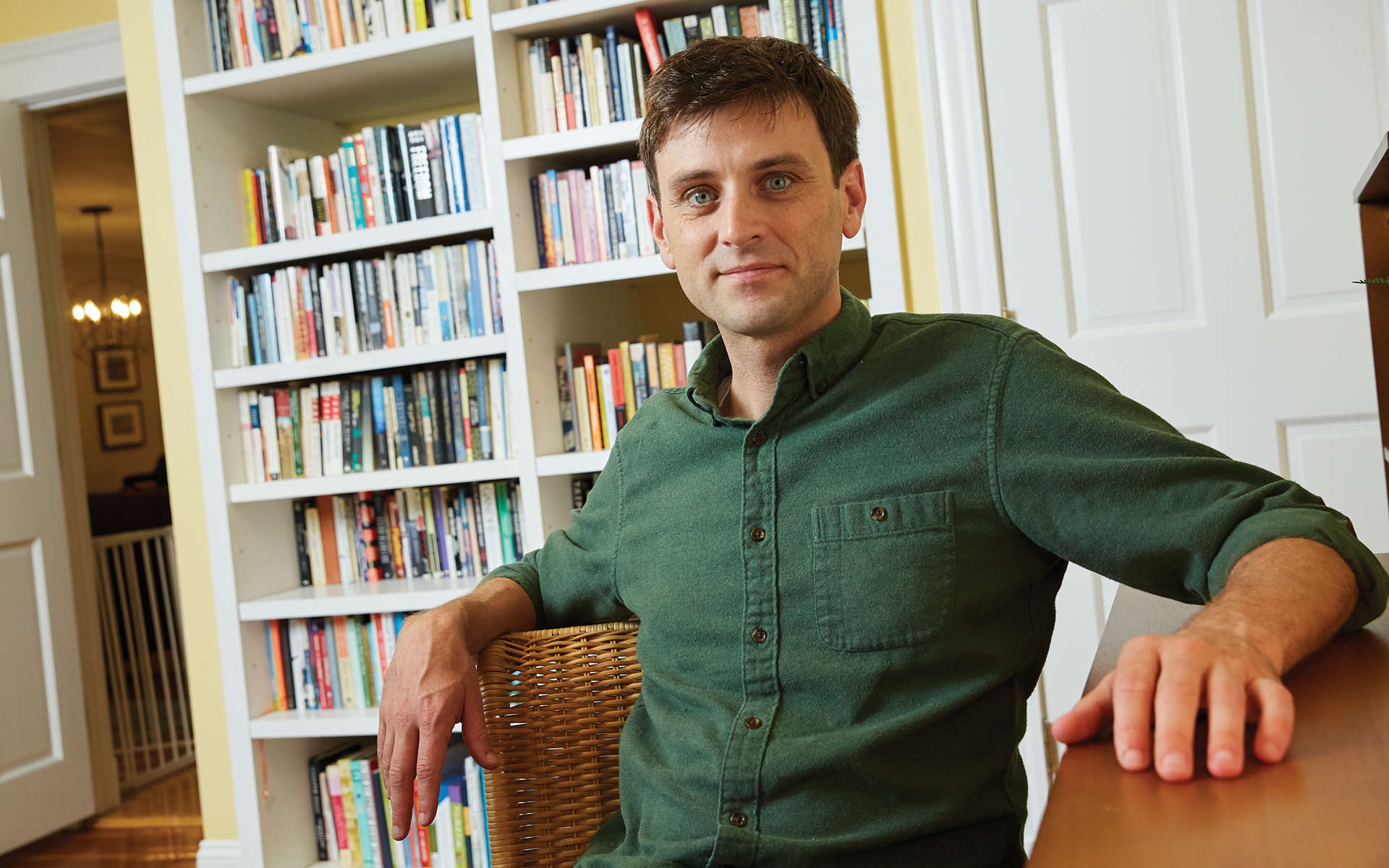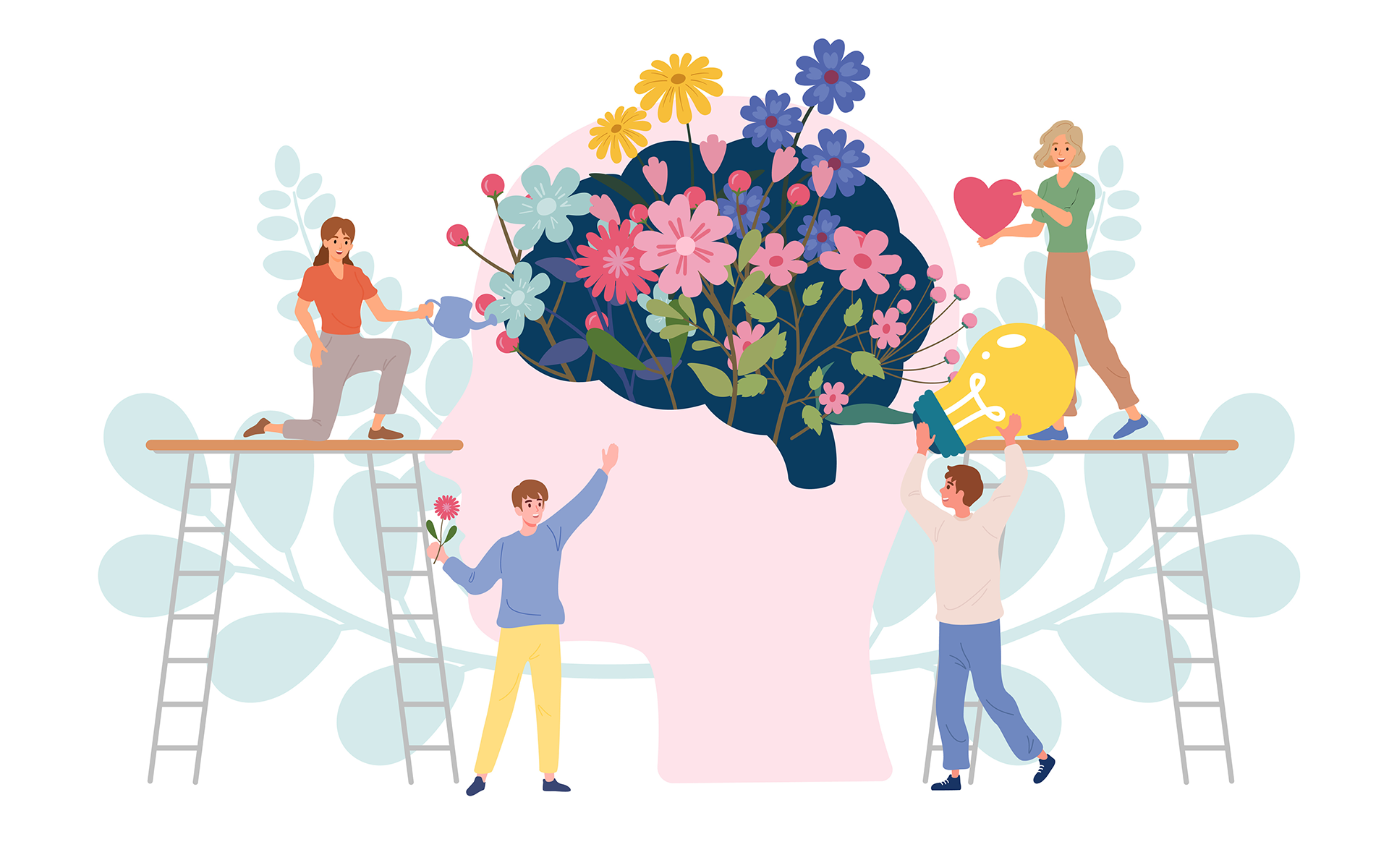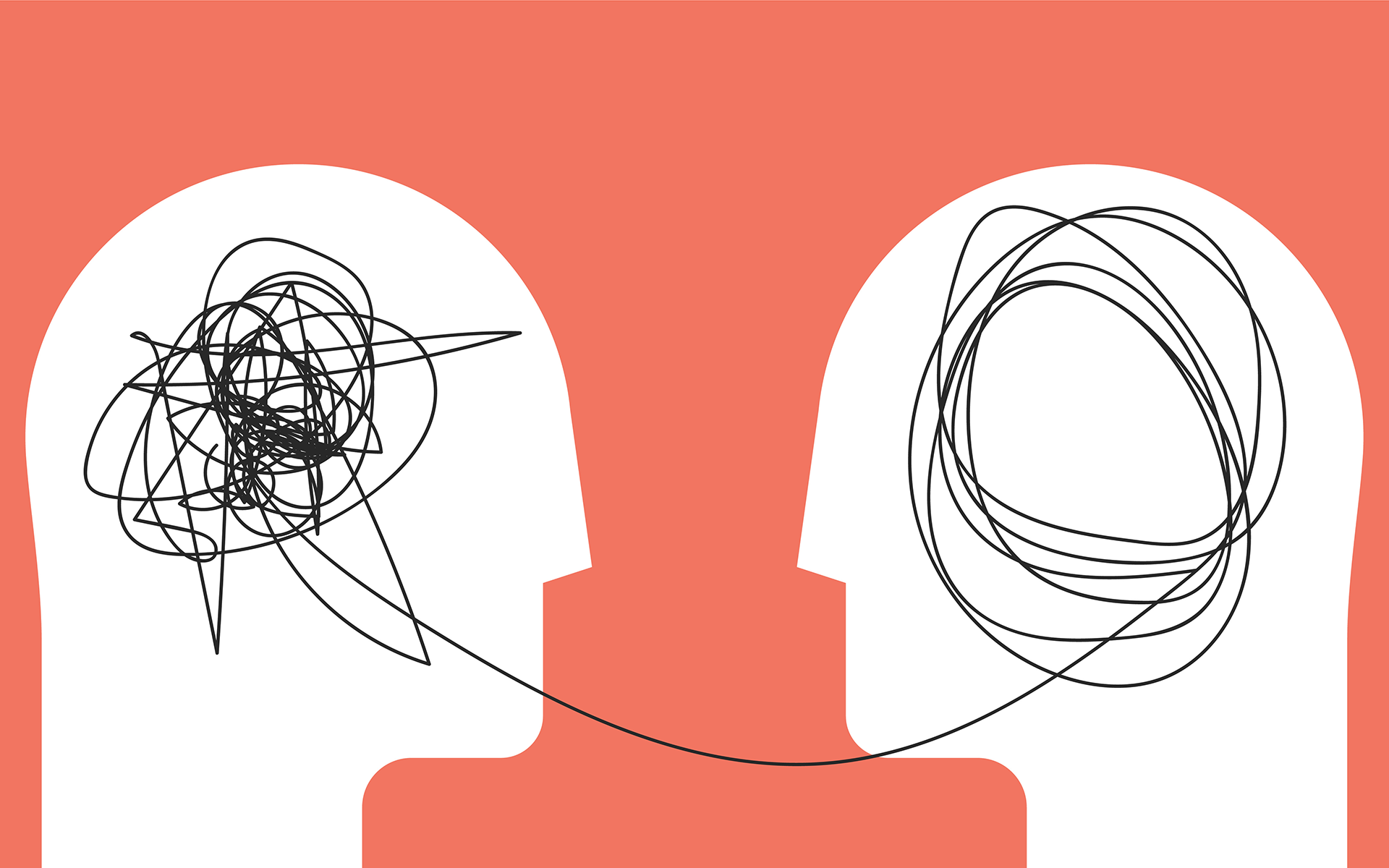Today, Dr. Christopher Willard lives in a charming house in Cambridge, Massachusetts, with his wife and two small children, not far from Harvard Medical School where he teaches—but a long way from an “epic meltdown” he experienced in college that led to drug addiction and homelessness. Now a successful speaker, book author, and educator who travels the world teaching mindfulness in schools, hospitals, NGOs, and other institutions, Chris opens up about how he discovered meaning, hope, and well-being through mindfulness. He’s spreading his message around the world, one breath at a time.
Let’s begin with the scope of your work. What’s going on right now?
I’m writing lots of books, working with schools, therapists, hospitals, organizations; consulting in the corporate and nonprofit world. It’s amazing to see mindfulness getting bigger—it’s also a little overwhelming. I do 50 or 60 trainings every year and travel a lot. I’ve been to around 20 countries to do workshops. I think I’m not the only mindfulness person feeling (ironically) very busy!
Why do you think there’s so much interest?
As we get busier and busier, doing more multitasking, becoming more wired, people are looking for a counterbalance. They are trying to find ways to slow down, to singletask instead of multitask. The way we are living is not sustainable for the planet, our communities, families, or individuals. In a secular way, mindfulness has a lot to offer that many religious and cultural institutions used to offer.
How did you come to mindfulness?
I got introduced to mindfulness when I was in my twenties. But when I look back, I realize I had experiences that were mindful before I knew the word, like going to nature camp and being told, “Let’s walk as quietly as we can.” Or, “Let’s listen for the sounds of the forest, or watch shapes in the clouds.” Many years later, I thought, Oh, that was basically mindful walking and mindful listening.
Then I went off to college and I had an epic meltdown of depression and anxiety. It’s something I’ve been more open about recently. I was into drugs and had a significant heroin problem. I had to leave school. For the next year I was a total mess. I was homeless, living in a park, when my parents dragged me to a retreat with Thich Nhat Hanh that they were attending. That was completely transformative. Suddenly I felt calmer, more creative, more connected. I felt like life was worth living. I felt hope. Then I went straight from there to a treatment facility and continued my journey in recovery. I think, like many people, I got started through suffering.
How did you decide to focus your work on young people?
I spent the first few months of getting sober listening to Jon Kabat-Zinn’s tapes and reading Thich Nhat Hanh’s meditations. Knowing how helpful mindfulness was on my path of recovery from substance abuse—and general misery—I wished I had had this when I was younger. From there, like any recent convert, I wanted to bring this to others. I thought, essentially, how do we reach kids who are having a hard time, or who might at some point, in a way that is creative and fun and accessible? That’s what really got me fired up.
What did you do next?
I went back and finished my undergrad degree, went to graduate school in clinical psychology, and got interested in exploring mindfulness, which was just becoming popular in psychology.
I also took my summers to travel to places like Asia and South America, trying to understand other wisdom traditions, what universal concepts there are for humans, how mindfulness manifests in different ways in different cultures. As I learned what else was out there, it blew up a lot of my stereotypes and expectations about mindfulness in other places. I spent a lot of time reflecting and then integrating what I learned into my work as a therapist.
There are also so many stressed-out parents, and when parents are stressed out, kids are stressed out. To create mindful kids, you need to surround them with mindful adults.
Through my dissertation, I started writing about mindfulness with kids. I’d always wanted to write a book and got my first contract for Child’s Mind after I read a book on publishing, and it sent me on a path that was completely unexpected. I had thought I’d keep working as a therapist or at a college, but soon I was asked to do public speaking, which terrified me, but I got more confident and it snowballed. Now I can’t believe this is my life. I get to teach, go to interesting places, meet and work with amazing people. I tell my wife every day, “This is so crazy, what a journey!”
You’ve said that teenagers are the most stressed-out group in America right now. Can you elaborate?
What we’re seeing with young people around the world is an epidemic of mental health issues and stress. One in three teens now has a diagnosable anxiety disorder. We’re seeing anxiety and depression in college, where huge numbers of kids are dropping out, like I did 20 years ago. There’s a tremendous amount of stress—from college pressure like I grew up with, and →in other places there’s poverty, and racism and other stressors. If you ask educators—the folks on the front lines who know our kids better than anyone—what’s changed, they talk about an uptick in mental health issues, and problems with emotional regulation, resilience, attention, and social skills. We are seeing lots of addiction. All of these respond to mindfulness.
Kids are worried about their own safety, of course, about acts of violence or shootings. They are concerned about climate change, wondering what’s going to be left for their generation. There’s financial anxiety and worries about our relationship to technology. It’s not helping to be on our devices all the time; phones aren’t helping us communicate or commune as they should. They are tearing us apart in many ways.
There are also so many stressed-out parents, and when parents are stressed out, kids are stressed out. To create mindful kids, you need to surround them with mindful adults.

What can help? What about mindful programs in schools?
There’s a lot of excitement around mindfulness programs in schools, and they’re becoming more accessible to more communities. Such programs are also very hard to do: What do young people need? Long-term retreat practice, or a few skills to help them through the day? It’s like calculus: Not everyone needs calculus, some just need arithmetic. Some kids just need a little breathing practice. Others need or want more. Then questions like how do you maintain quality while reaching the most people?
I hope that every kid gets at least one good experience with mindfulness, so later in life, when they need it, it is already there. I was lucky enough to have that—I hope every kid can, too.
What’s your own personal practice like?
My practice is sometimes really formal, sitting at a certain time for a certain amount of time, but it’s different than it used to be. When my son was born, my practice became, well, extremely irregular. About a year ago, I was getting back to sitting every morning and then my daughter was born.
I took a meditation course after my daughter was born. It was good, but it was hard to be away from her. I found myself thinking, I should be at home with the kids. Am I getting enough out of this? My practice has definitely been different since I had kids.
So now my practice also manifests in other ways—when I lie down with my kids, we practice gratitude before bedtime, or when my wife and I and our children express what we call “happy thoughts.” We also find ways to integrate mindful breathing before meals.
I’m teaching some mindfulness now to my young son, who is four. When he is with me in the car and I’m stuck in traffic, I do this thing where I get him to breathe with me. These are the basics that he will grow up with. Recently, though, he told me, “Dad, no more books about breathing!”
You teach at Harvard Medical School, so I wonder how mindfulness is viewed in such places.
It’s widely accepted and mainstream at this point, increasingly in medical education, certainly in psychiatry, but also in other aspects such as managing stress, managing life–work balance. And mindfulness is creeping into medical school. What we’re doing at Harvard is trying to make it creep a lot faster.
Jon Kabat-Zinn did a lot of excellent early research that’s known, so by now mindfulness is not totally hippy-dippy. Today, at least in the mental health world, I can’t imagine a single program out there that doesn’t include a bit of mindfulness. That’s also increasingly true in education.
You’ve talked about the link between mindfulness and happiness. Can you expand on that?
My thoughts keep coming back to the topic of awe. Research has found that awe boosts happiness and connection, even compassion. Part of what I think mindfulness does is help us find “the miracle in the mundane,” as a friend once put it. To experience awe in the simple act of eating a raisin, taking a walk, or in other ordinary moments. My first encounters of mindfulness were profoundly powerful because they sparked that sense of awe, made life meaningful, and made me feel connected. And it was going to take something truly extraordinary in order to compete with the highs of IV heroin. Of course, it also strongly outweighed the lows and side effects of drugs →and alcohol, as well as the fact that
I was homeless.
Part of what I think mindfulness does is help us find “the miracle in the mundane,” as a friend once put it. To experience awe in the simple act of eating a raisin, taking a walk, or in other ordinary moments.
Thich Nhat Hanh and others are masters at helping us find meaning and miracles in everyday life through mindfulness practice and mindful awareness. For me and so many others, to be able to find more happiness, less anxiety, sobriety, less stress, a sense of lightness, a sense of freedom, has often come through finding meaning. For some people that’s spirituality; for some, family and community; for others, a hobby, an art, a career. For many people, mindfulness has opened us up to the things that bring meaning into our lives.
Have you found that to be true in your own life?
Yes. Mindfulness doesn’t make us happier exactly, but it helps us know clearly when we are happy and when we are unhappy, and that means we are less likely to perpetuate our own suffering through doing things that make ourselves and others less happy. In that sense, it creates the conditions for more happiness and joy to enter our lives. It feels pretty crazy to me that my life has gone from homeless in a park to teaching at Harvard Medical School.
You’ve said that kindness and generosity can be catching, that there’s a kind of social contagion possible.
We all know that kindness is good, but what’s really interesting is how compassion and generosity impact the structure of our brain. And these qualities actually start to affect our behavior: If I act one way and it becomes a habit, and I act that way tomorrow with other people, I get positive feedback. It keeps going. Years ago I remember hearing “courtesy is contagious” in drivers’ education class, and at the time I was a teen and we all thought, Oh that’s so stupid. But now I’m 41, and this question of “is mindfulness contagious” is really exciting to me.
A team in England showed that an individual’s mindfulness practice can lead to more positive emotions in the people around them. Every week if someone practiced, the roommate or the boyfriend was in a better mood. This contagion again trickled out.
This stuff blows my mind, the way that our practice really makes an impact in the real world. We know these practices change our brains, our bodies, our behavior, even our genetic expression. But can my practice actually change the brain, body, and behavior of people around me? Well, according to the research it looks like it can. Parents who practice can change the brains and behavior of their kids. Teachers who practice change the behavior of their students. Therapists who practice change the mood of their clients. Roommates who practice change their roommates!
Sometimes I think, ‘What are we doing sitting on our cushions? We should be out in the world.’ But both are really important. We need to sit on our cushions, but also bring mindfulness out in the world, because that has an impact that we need now more than ever.
Chris Willard on working with kids and his new book, Alphabreaths.
The main intention I have when I teach kids mindfulness is that they will have a positive experience, that the seed is planted so someday they can have an opportunity to practice and it’s a happy memory, not a chore. What’s critical is that we always keep it fun and positive.
I’m excited about Alphabreaths because we think of the fun and funny breaths it encourages as the training wheels for mindfulness. First, we make breathing fun, help kids become aware of their breath, then we teach them how to regulate the breath with these kinds of practices. Concepts like the polyvagal theory and other understandings of the stress response show us that as we slowly regulate the breath, we regulate our bodies, our physiologies and our brains, which of course regulates our attention, impulses, and emotions.
If kids can learn that, we’ve taught them something incredible. And if they go from there to actually developing a deeper mindfulness practice, even better. With the mental health crisis in young people, I also think more than ever we need to give kids skills, starting at Alphabreaths age, which is stuff even three-year-olds can do, that can grow with the kids so they will be more resilient and skilled going into the stresses and suffering they will inevitably face. We want to protect our kids and we should, of course, but we also can’t protect them from every B minus, breakup, or worse, that they inevitably face. At some point they need these skills themselves.
For teens, play means things like wordplay, joking around, having fun. But teens can respond to a bit more seriousness, too, depending on a young person’s personality. I try to use science with them, talking about the breath being a remote control to shut off the alarm of the amygdala and the fight-or-flight system.
Older kids also have a greater attention span for practice and don’t need as much imaginary stuff. Although guided imagery is great, they are going to roll their eyes at something like “butterfly breathing,” so a longer metaphorical image, like watching thoughts by imagining them to be like leaves floating in the river, or clouds passing in the sky, might resonate.



